At the University, the Wrapping is Removed
After completing the renovation of the heritage-protected Böttcher Building, the scaffolding has been dismantled – now more than just the golden crown shines in new splendor
-
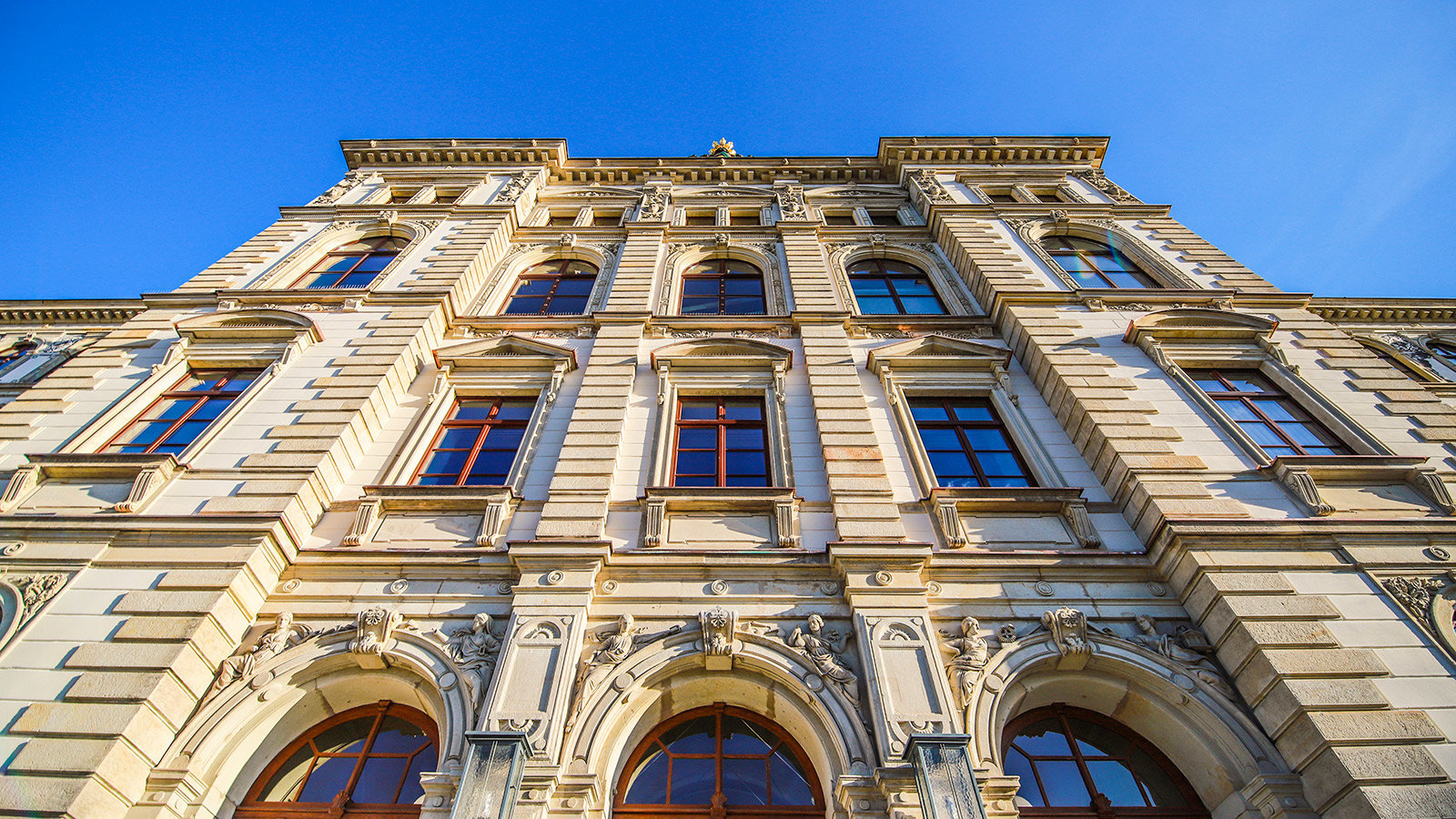
The pairs of figures above the doors of the main entrance indicate the subjects taught in this building more than 140 years ago: mathematics and physics, textile technologies and chemical engineering, and mechanical and structural engineering. Photo: Jacob Müller -
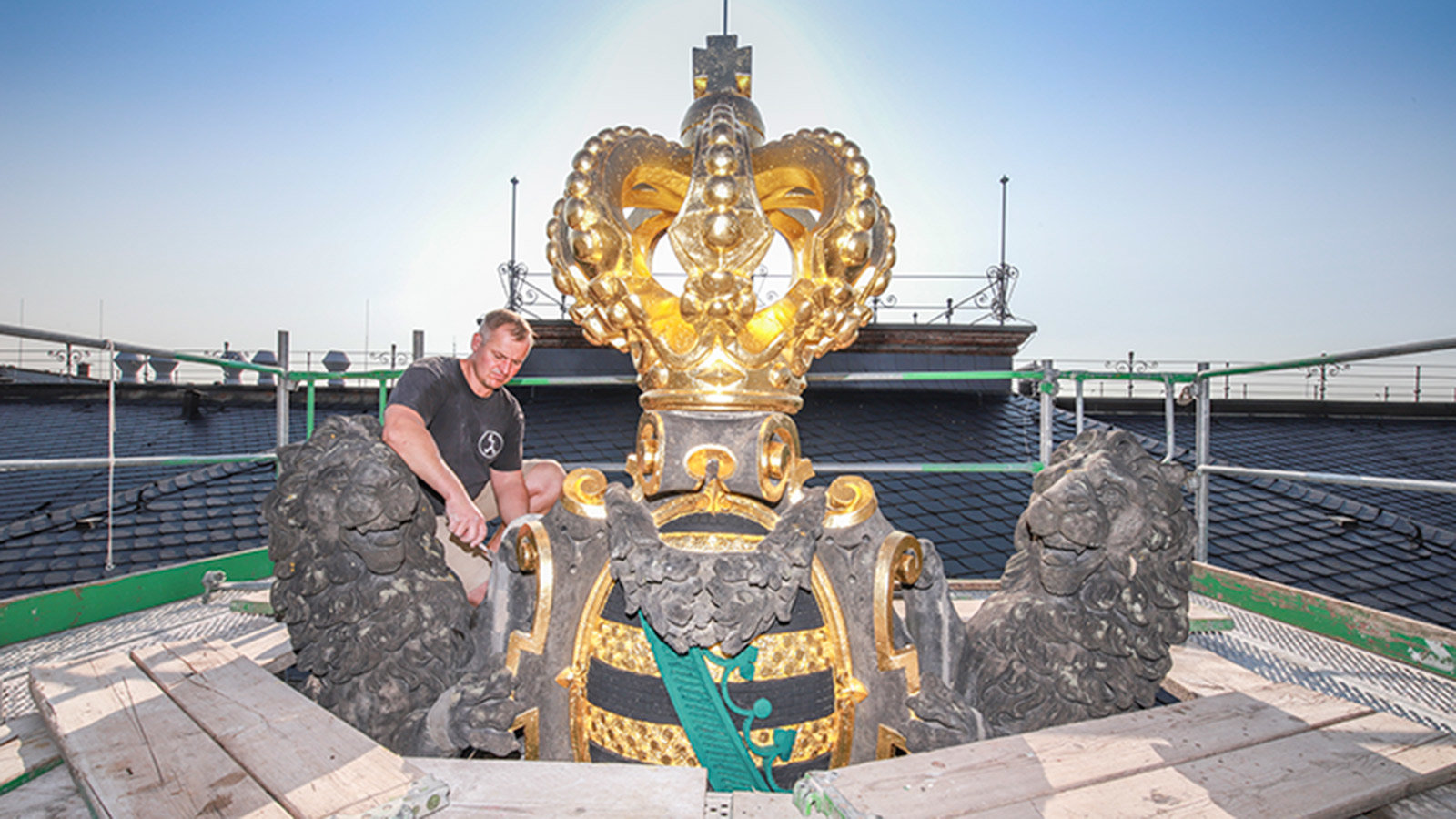
Restorers ensured that the crown would shine in new splendor on the Böttcher Building. Photo: Jacob Müller -
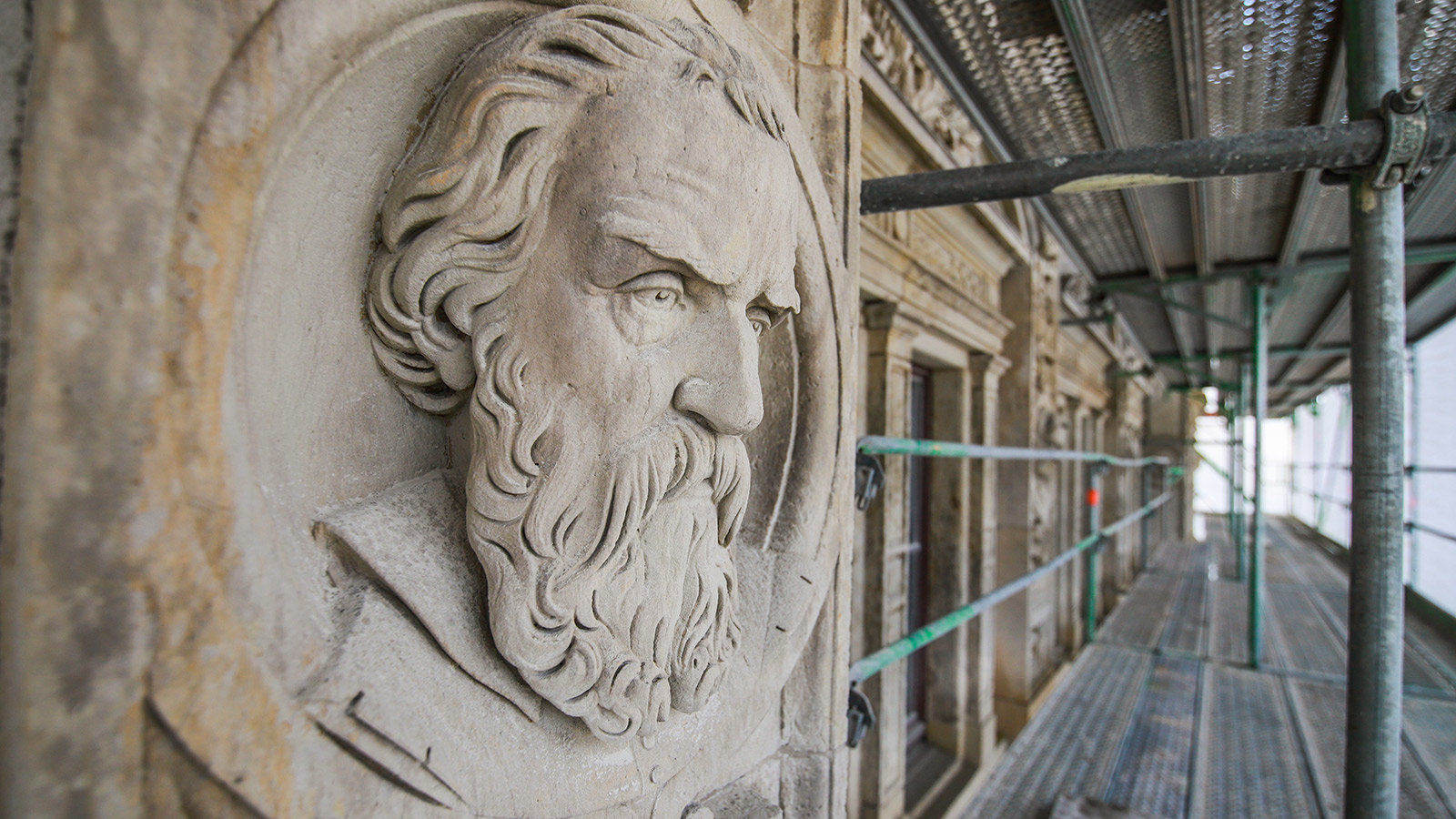
The details of the portraits, such as Galileo Galilei here, are only discernable when viewed up close from the scaffolding. Photo: Jacob Müller -
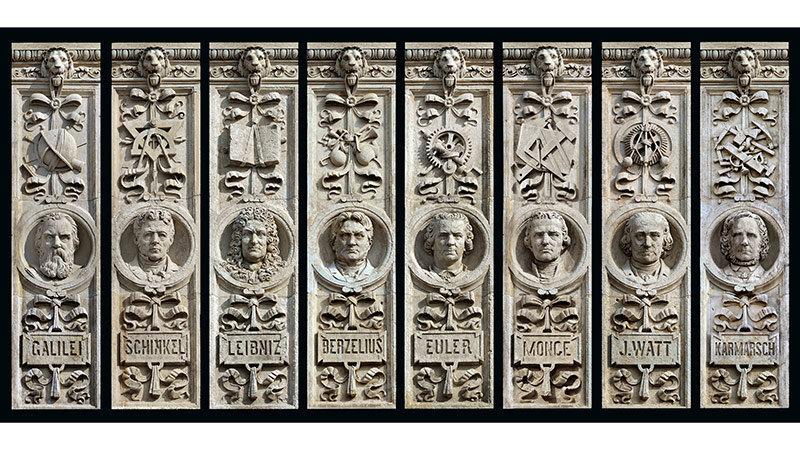
These high relief portrait heads complete the elaborate façade. Along with Galileo is, from left to right, Schinkel, Leibniz, Berzelius, Euler, Monge, J. Watt, and Karmarsch. Composite photograph: Image archive of the press office/Wolfgang Thieme -
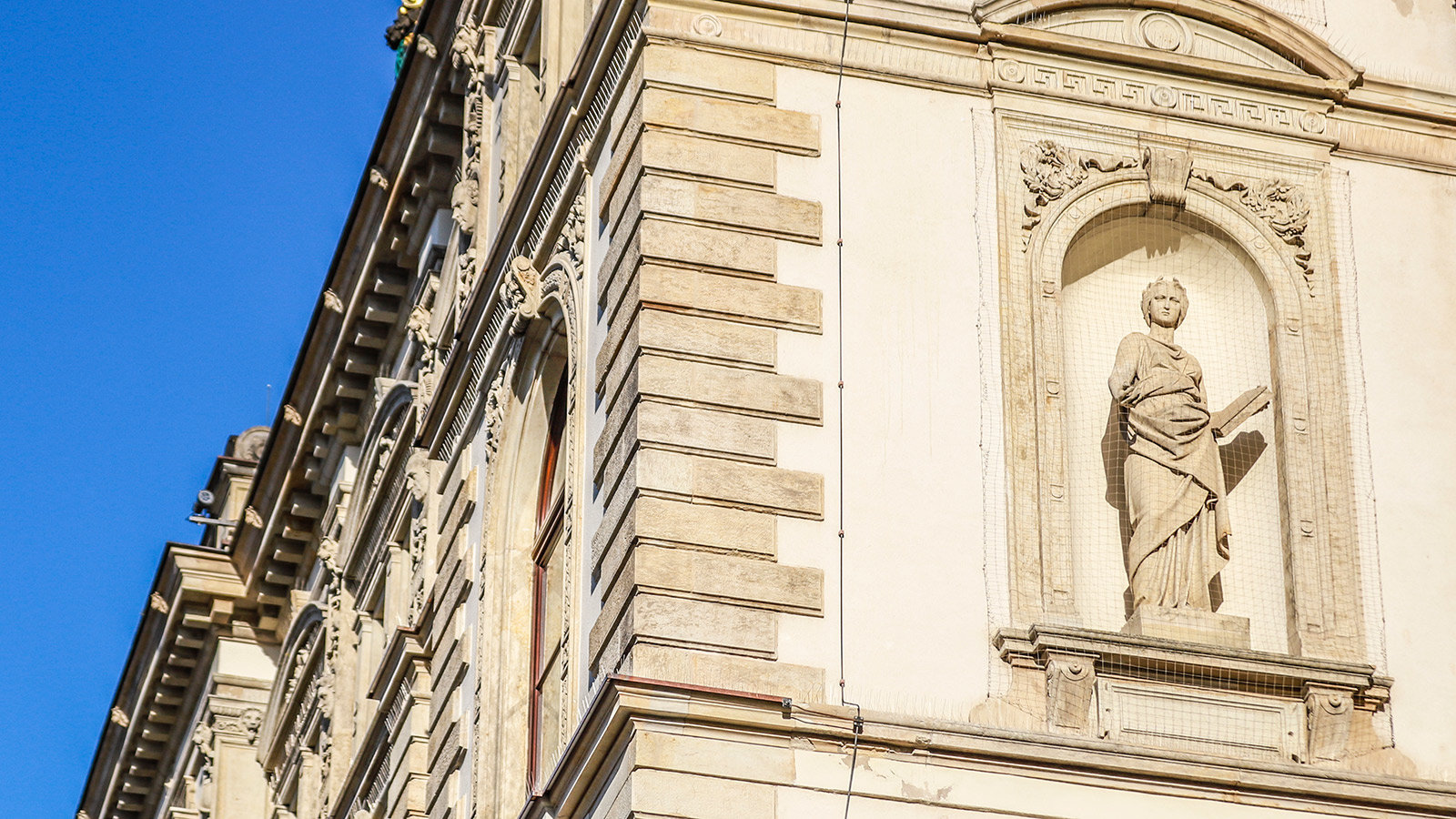
The 2.25-meter-high statue incorporated into the façade represents scholarship, with a book in a lecturing attitude. The façade elements are protected by pigeon nets and lattices. Photo: Jacob Müller -
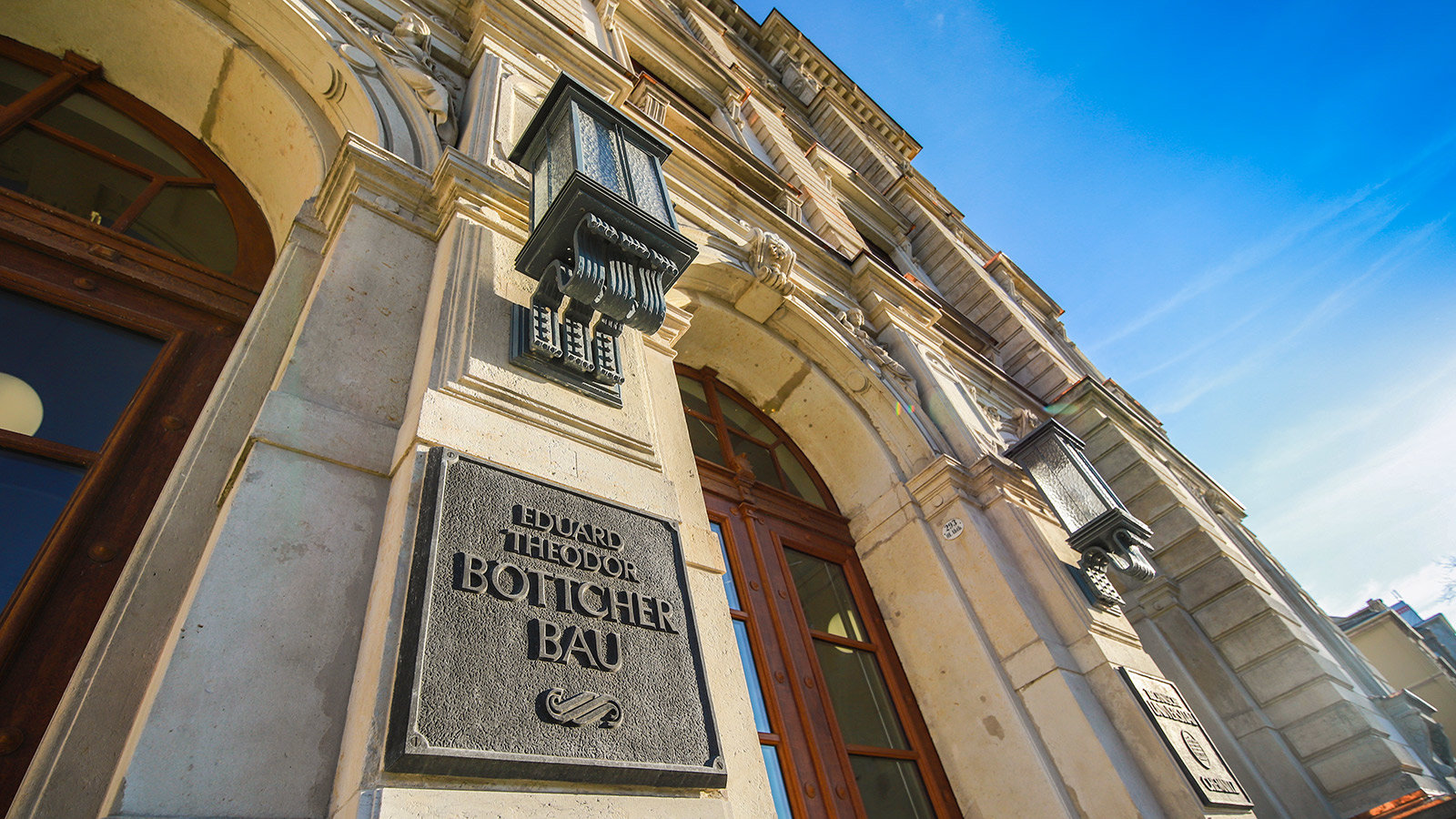
Since the 150th anniversary of engineering education in 1986, the main building of Chemnitz University of Technology has been named the Eduard Theodor Böttcher Building. Photo: Jacob Müller -
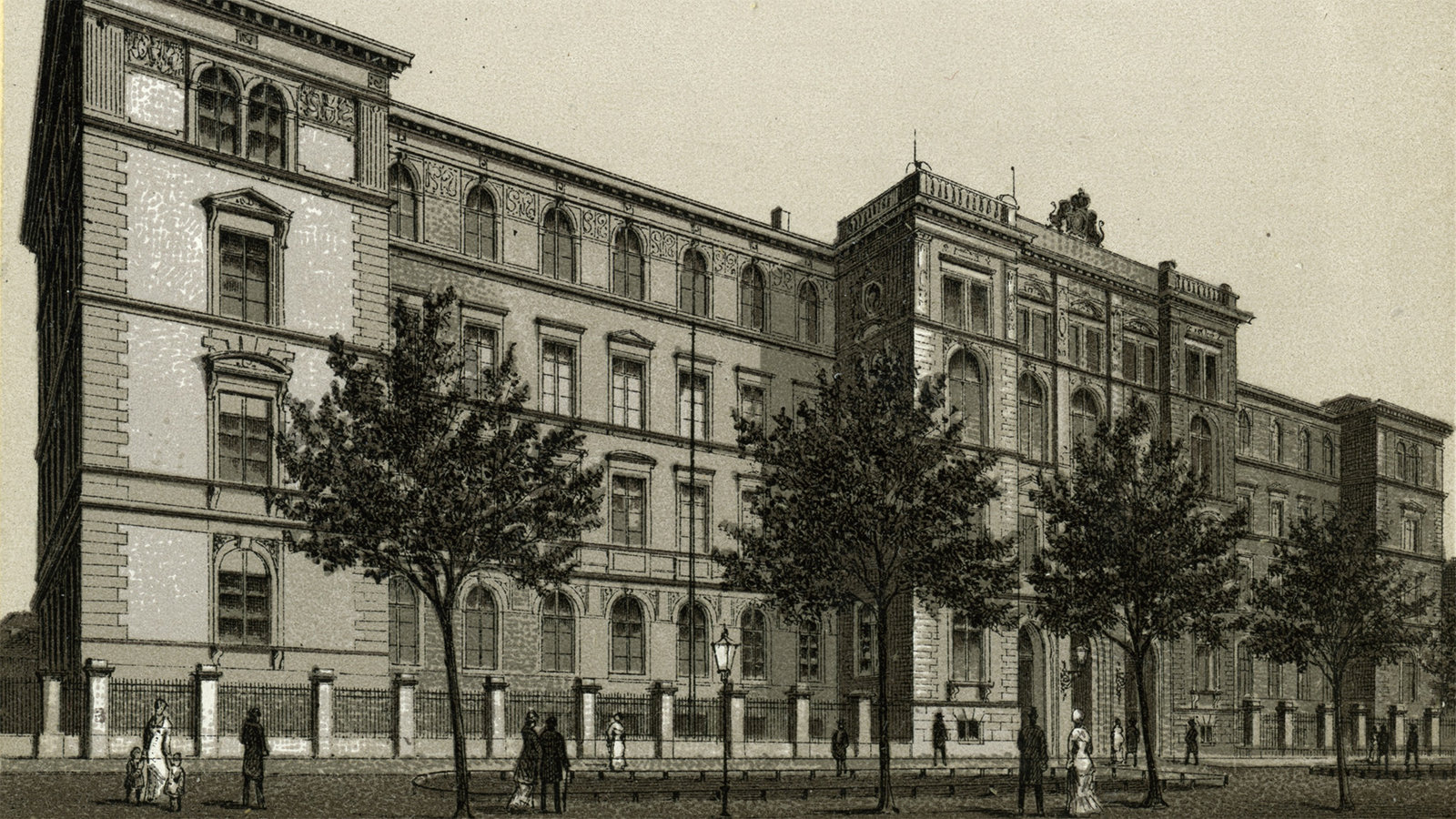
A look back: This picture of the Böttcher Building from 1885 (at that time referred to as the Staatslehranstalten, or Royal Technical Schools) comes from the album “Chemnitz”, a 15x12.5cm leporello (folded leaflet) about the city. The original of this digitised photo is located at the Hessian State Archive Darmstadt. Source: Archivportal-D/ https://www.archivportal-d.de
The renovation of the façade at the Böttcher Building at the Chemnitz University of Technology Straße der Nationen 62 campus is over. The scaffolding which shrouded the building for months has been dismantled, and the elegantly-designed portal of the heritage-protected building and its natural stone façade now shines in new splendor. Natural stone made of granite, porphyry, and sandstone, among others, was cleaned of dirt and encrustations, loose areas of the façade were secured as a part of expanded safety measures, and some general repair work was carried out. And the golden crown on the roof of the building, one of its most striking features, has been restored. The construction project was coordinated by the state-owned Sächsisches Immobilien- und Baumanagement firm, represented by its Chemnitz branch, in cooperation with the Chemnitz University of Technology Department of Civil Engineering and Technology.
Impressive façade design
If you take some time to look closely at the façade, you will discover many interesting details: in the center of the 74-meter-long and 21-meter-high building façade is the middle portion, flanked on each side by sections that contain four rows of seven windows apiece. On this middle section of the building one finds the decorative natural stone façade, consisting of granite, porphyry, and sandstone elements. Three pairs of figures above the main entrances indicate the subjects taught previously in this building: mathematics and physics, textile technologies and chemical engineering, and mechanical and structural engineering.
A bit further up, at the level of the former auditorium windows, two 2.25-meter statues are situated on the sides of the middle section. The left figure, with a cogwheel and compass, symbolises technology. The figure on the right represents science, via its book and discursive pose. Attached to the pilasters between the windows of the fourth floor are reliefs of portraits of famous representatives of the sciences. Corresponding emblems are found above their heads, and each also has a tablet with the surname of the scientist. All portraits and the two statues were modeled by the sculptor Anton Händler, who taught at the "Gewerbezeichenschule".
On the roof of the building, directly above the portraits on the fourth floor, is a parapet wall. At its creation, it was adorned with the lettering “Royal Technical Schools”, which has since been replaced with the words “Technical University”. Rounding this out is a picture of two lions, which hold the Saxon coat of arms, decorated with a golden crown.
He gave his name to the Böttcher Building
It is thanks to Professor Eduard Theodor Böttcher (1829-1893), director and teacher in mechanical engineering, that the laying of the foundation of this prestigious building was completed on 2 September 1875, and the former school building on Dresdner Straße could be abandoned. Already in 1876, the building, adjacent to the train station, was handed over to the laboratory. The busts of Berzelius and Humboldt that are found at the main entrance date from this time. Since the 150th anniversary of engineering education in 1986, the main building of the university has been named the “Eduard Theodor Böttcher Building”.
Did you know? These are the eight scientists depicted on the façade of the Böttcher Building:
Galileo Galilei (1564-1642): The founder of modern science, with the help of his refraction telescope, discovered the mountainous landscape of the moon. In addition, the Italian mathematician, physicist, and astronomer published the law of motion.
Karl Friedrich Schinkel (1781 – 1841): The Prussian architect, urban planner, and painter is considered a main exponent of Berlin Classicism. As a superintendent, he was responsible for shaping Berlin as a representative capital for Prussia. For example, he created the New Guardhouse (Neue Wache), as well as the Berlin Concert House (Schauspielhaus) on Gendarmenmarkt, and the Old Museum (Altes Museum) on Museum Island (Lustgarten).
Gottfried Wilhelm Leibniz (1646 – 1716): The philosopher, mathematician, and naturalist was one of the first foreign members of the French Academy of Sciences. It is thanks to him that the colon has another function: as a sign used in division.
Jöns Jakob Berzelius (1779 – 1848): The Swedish chemist was one of the most important naturalists of his time. He discovered the elements thorium and selenium, and calculated the relative atomic weight of 45 elements. This was all published in 1818 in an atomic weight table. He also introduced the terms isomerism and catalyst.
Leonhard Euler (1707 – 1783): The mathematician, physicist, and astronomer dealt with, among other things, differential and integral calculus, and he also introduced the notation f(x) for a function. The base of the natural logarithm, the Euler number “e”, is traced back to him.
Gaspard Monge (1746 – 1783): The French mathematician and physicist studied mirages in the desert, and thus could correctly interpret the Fata Morgana for the first time. The Parisian professor was also considered a founder of descriptive geometry.
James Watt (1736 – 1819): The Scotland-born inventor and mechanic made a significant contribution to the development of the steam engine, leading to its industrial breakthrough. He is also considered to be the inventor of the copying press and the steam condenser. In his honor, the unit of power is called a Watt.
Karl Karmarsch (1803 – 1879): The Viennese-born engineer was the founder of the Higher Technical School in Hannover, which is known today as Leibniz University, and was the head of the school for 44 years. The writer and scholar was also considered a founder of Mechanical Technology as an academic discipline.
(Author: Mario Steinebach, Translation: Jeffrey Karnitz)
Mario Steinebach
22.11.2018




